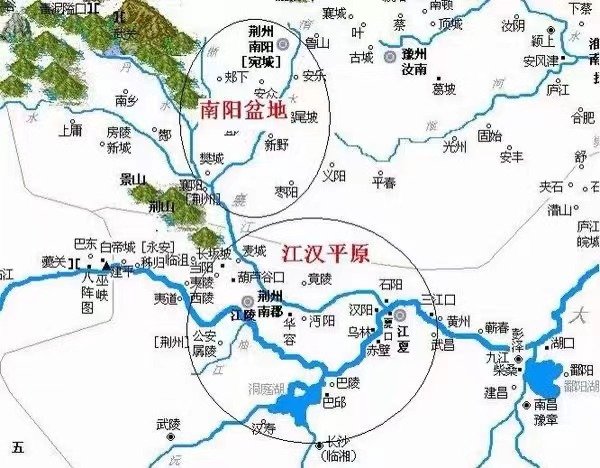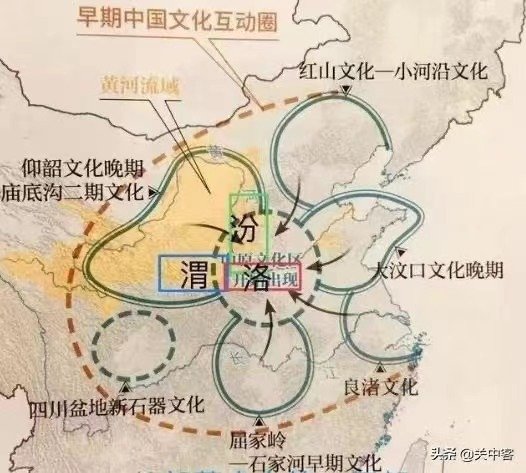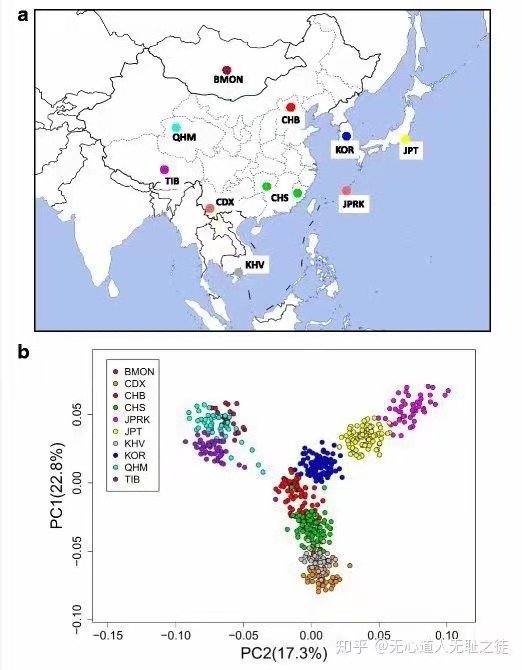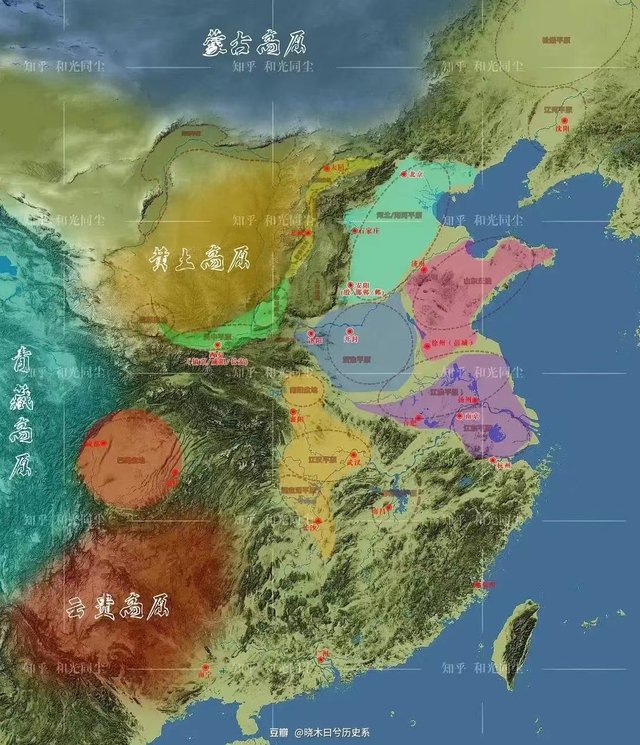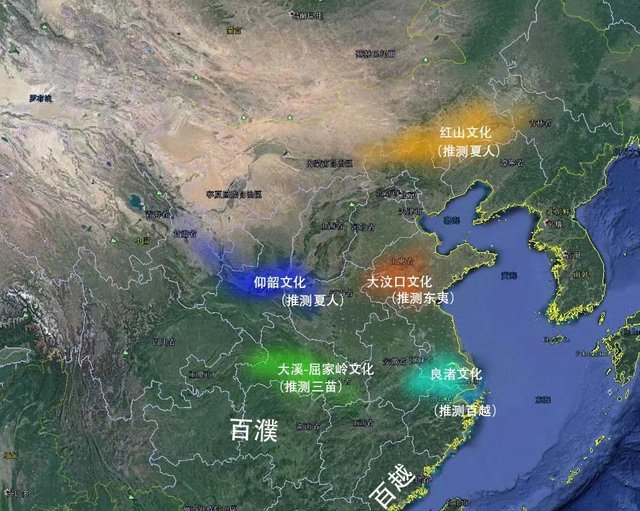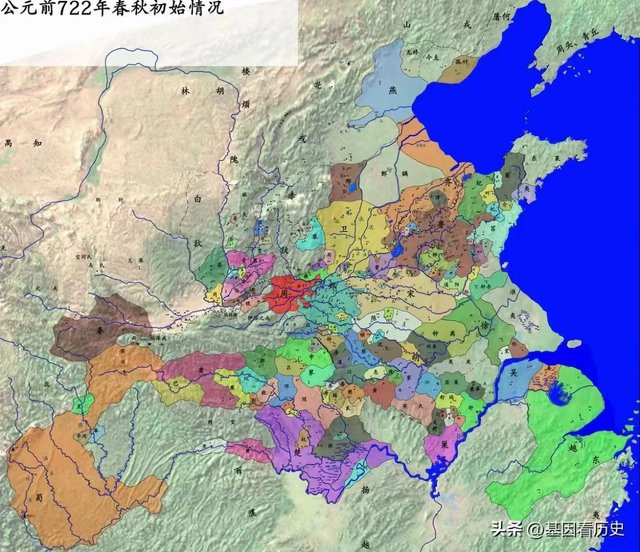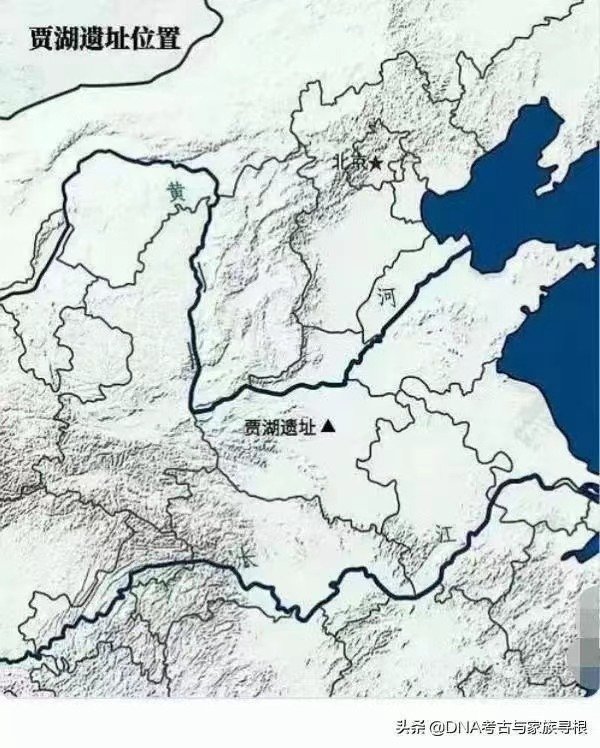The history of Chinese civilization over 10,000 years
First of all, I don't agree with the African origin theory of human origin, that is, the origin of modern humans out of Africa. Ok, let's look at the historical context of Chinese civilization that I have summarized with my current knowledge.
One, the origin. Early Ancient Mythological period. At least 10,000 years ago.
This is the origin of human civilization. Corresponding myths include Chao, Flinten, Nuwa, Kuafu and Shennong.
At this time, a relatively complete myth and legend emerged, and reflected the event record in a mythological way, such as Nuwa repairing the sky (the earliest flood memory), Kua Fu chasing the Sun (astronomical record), Shennong eating a hundred grasses.
"In ancient times, there were few people and many animals, and the people were defeated by animals, insects and snakes. A sage made a nest of wood to avoid the evil of the crowd, and the people were happy with it, so that the king of the world, the name is Chao Shi. MinShi fruit Luo clams, smelling of urine stink and damage abdomen stomach, people more disease. There are sages who drill into flintlocks and make fire to make shame, and the people say, so that the king of the world, the name is called Flintman." Han Fei-Zi Wu-zhi
"In ancient times, the husband did not plow, and the vegetation was sufficient to eat; A woman does not weave, but a garment of beast's skin is sufficient." Han Fei-Zi Wu-zhi
During this period, human beings mostly lived on hunting, there was a couple system, agriculture had been enlightened, culture began to flourish and spread, but civilization had not yet emerged.
Due to the influence of the last glacial period, which began 75,000 years ago and ended 11,000 years ago, the human pattern was greatly reshuffled and a new pattern was formed. The human distribution in East Asia is:
First, the core region of East Asia and Eastern Asia (yellow race) are divided into three parts due to geographical isolation.
The northern Mobei Mongolian region in the north of the desert is the r and q series of North Asian yellow race. The ancient North Asians.
The Great Wall area is oq, nc in northeast China, and o3 Yellow River. The ancient Yellow River type.
3, coastal o1, Yangtze o1b yellow race. The ancient Yangtze River type.
Second, other ethnic groups in and around East Asia are:
Xinjiang is the Northern European subrace, belonging to the East European subrace and the West European subrace, as well as the Yellow River type Yellow race.
Siberian, Nordic and North Asian peoples lived together.
3, Southeast Asia is the ancient Asian black majority.
- The Western regions to the west of Xinjiang are mainly white people in Western Europe and Asia.
5, Tibet is a high mountain d population.
- Ancient people in Guangxi Region.
Second, the late period of ancient mythology. Three Emperors period. 10,000 to 5,000 years.
Corresponding legends and records are as follows: the ancestors of civilization Fuxi, Nuwa, Shennong, etc., different versions of the three emperors (Emperor, Emperor, Emperor) especially the legend of man Emperor, showing that after the inheritance and development of the early culture, the civilization has emerged.
- The earliest civilization site found in China is the Jiahu Site in Henan Province 10,000 years ago. It is mainly the gene of the Yellow River basin and is influenced by rice farming in the south and millet farming in the north. For the first time, Chinese civilizations converged and formed primitive Chinese culture.
Note that half of the area affected by the Jiahu site is in the Han River of the Yangtze River, which is the junction of the northern and southern water systems. Therefore, it can be found that the Jiahu culture population contains a part of the early ancient southern genes. That is, the mixing of genes between north and South occurred 10,000 years ago. The embryonic form of Northern Han gene was formed.
- The Jiahu site area is located in the center of ancient water transportation, which was catalyzed by water transportation and tribal commerce and formed the earliest starting point of Chinese civilization.
At this time, the genetic population of the Yellow River and the genetic population of the Yangtze River influenced each other, and for fifteen thousand years, the civilizations in the south and north of China showed a star-shaped state.
However, due to different conditions, rice farming is done in the south, as well as beans in buffalo. North millet agriculture, as well as millet millet cattle and horses.
The production mode of the two sides is relatively isolated, and the influence is less than that of the North-South gene mixing.
- With the Gujiahu cultural area as the center, the population of the ancient Yellow River and the Ancient Yangtze River expanded rapidly to the surrounding areas with the crushing of productivity 10,000 to 5,000 years ago, and the population and culture spread rapidly. The primitive Chinese civilization spread to the world. First, Chinese civilization expanded vigorously.
First, near the Yangtze River, Yellow River, Pearl River and Liao River in modern China
The ancient Northerners expanded and formed Dongyi, Xiqiang and Beidi.
The ancient southerners expanded, forming Sanmiao, Baiyue and Baipu.
Second, beyond the Yangtze River and Yellow River. To the north.
Under the influence of the primitive Chinese civilization represented by the wheel, the qno Yellow population of the ancient Yellow River continued to spread its culture and population, using the wheel to reach the outer Mongolia of North Asia, Northeast Asia Siberia and the Qinghai-Tibet Plateau.
The formation of ancient inland plateau, nomadic, fishing and hunting peoples. That is, Qinghai-Tibet includes South Asia, forming the ancient Qiang od; The northeast includes the other northeast can be called the ancient Donghu people oc; The northern part of Mongolia is called the Ancient Turkic people qr.
A part of the rqn yellow race in North Asia learned advanced technology and breeding, and expanded westward under the squeeze of the ancient Yellow River civilization and the population of the ancient Yellow River. Due to the small population, they rushed into the white people in Central Asia, gradually whitened and merged into the white people to form the Indo-European language family, and expanded to the Western Asian world, forming the r and n white people.
Third, south of the Yangtze River, Yellow River and Pearl River.
Under the influence of the primitive Chinese civilization represented by ships, the yellow race of the ancient Yangtze River expanded southward.
Some entered Indochina Peninsula, forming the South Asian language family, Cambodia.
Some sailed into the South China Sea, forming the Austronesian language family. And mixed with some of the genes of Southeast Asian natives to form the first wave of Malays, known as the original Malays.
Some of them made their way to Japan, where they became part of the early Sishu people.
